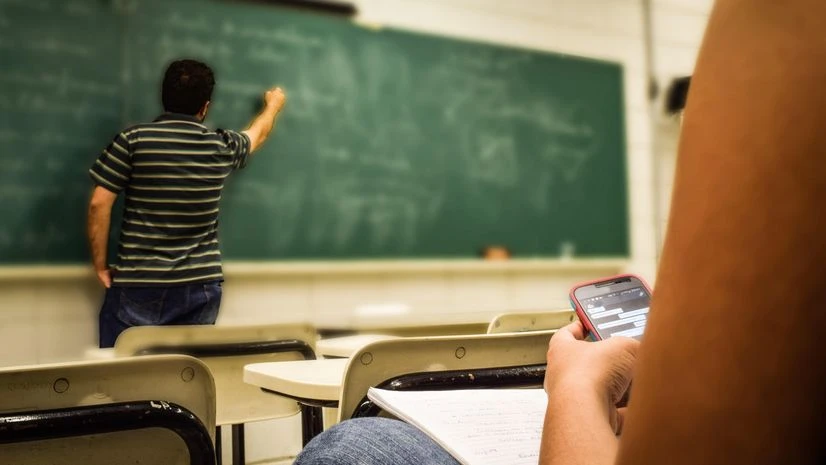India has taken a tumble in the latest World Economic Forum (WEF) report for 2024, slipping to 129th out of 146 economies in the global gender gap rankings. This dip is primarily due to setbacks in the education sector, causing India to fall a couple of places from last year.
But where does the gap lie?
The WEF’s June report indicates that new data on educational attainment has caused a dip in India’s gender parity levels. Despite high enrolment rates for women in primary, secondary, and tertiary education, progress has been sluggish. The literacy gap between men and women remains substantial at 17.2 percentage points. Consequently, India ranks 124th in this indicator, scoring 0.964 in education, a notable decline from the perfect score of 1.000 achieved in 2023.
Ricky Li, WEF’s Insight and Data Lead, explained to The Hindu that the source data for educational attainment indicators is periodically updated by the United Nations Educational, Scientific and Cultural Organisation (Unesco). The latest values used in the computation correspond to the 2022 and 2023 periods, whereas the previous editions included data from 2018, 2021, and 2022.
Li added that these updates can significantly impact gender parity scores, causing fluctuations that might seem more alarming than they are.
What do Indian statistics show?
The Ministry of Education’s data, collected through the Unified District Information System for Education (UDISE+) and the All India Survey on Higher Education (AISHE), paints a more detailed picture. The UDISE+ report for 2021-22 shows that while boys make up a larger percentage of the school population, the gender gap varies across different stages of education. For instance, girls constitute 48 per cent of the school population overall, but this figure fluctuates at different educational levels. In preschool, girls make up 46.8 per cent of enrolled children, rising to 47.8 per cent in primary school and 48.3 per cent in upper primary school. However, the gap widens again in secondary school, with girls dropping to 47.9 per cent.
Also Read
Interestingly, girls who continue to secondary education are more likely to stay until the finish. At the higher secondary level, the gender gap narrows again, with girls making up 48.3 per cent of enrolled students.
In higher education, the AISHE report for 2021-22 indicates that the gross enrolment ratio (GER) for women is marginally higher than that for men, with women achieving a GER of 28.5 compared to 28.3 for men. This marks a 32 per cent increase in female enrolment since 2014-15.
Incentives for girls’ education
One of the most effective measures has been the construction of more schools. When primary schools are located within one or two kilometres of a child’s home, parents are more likely to enroll their children, especially girls. This has been particularly evident since the mid-90s, when a significant increase in the number of schools corresponded with a spike in girls’ enrolment nationwide.
Other factors contributing to increased enrolment include the presence of women teachers, free transportation, and sanitation facilities. In areas with only male teachers, parents are often reluctant to send their daughters to school. Similarly, free bus passes and cycle schemes have boosted enrolment in states like Haryana, Punjab, and Tamil Nadu, though these measures have been less effective in Rajasthan. Sanitation remains a critical issue, especially for girls after puberty, and inadequate maintenance of school washrooms often leads to dropouts after Class 8.
Next challenge in gender gap
While several states have successfully closed the gender gap in higher classes, there are concerns about boys dropping out before completing school. In West Bengal, for instance, girls make up 55.7 per cent of higher secondary students. This trend is also seen in Chhattisgarh and Tamil Nadu.
The Right to Education Act stipulates that students cannot fail until Class 8, which means girls who make it to Class 9 are usually interested in studying. However, some boys drop out after failing at the secondary level, often due to economic pressures.
At the college level, although the female GER is higher than the male GER, regional and discipline-wise disparities remain. Women constitute only 42.5 per cent of students in Science, technology, engineering, and mathematics (Stem) subjects from undergraduate to PhD levels, highlighting the need for initiatives to encourage more girls to pursue these fields.
Additionally, adult literacy remains a concern, with only 64.63 per cent of women being literate compared to 80.88 per cent of men, according to the most recent Census data from 2011. Improving foundational literacy in schools and providing educational opportunities to rural women are essential steps toward closing the gender gap.

)